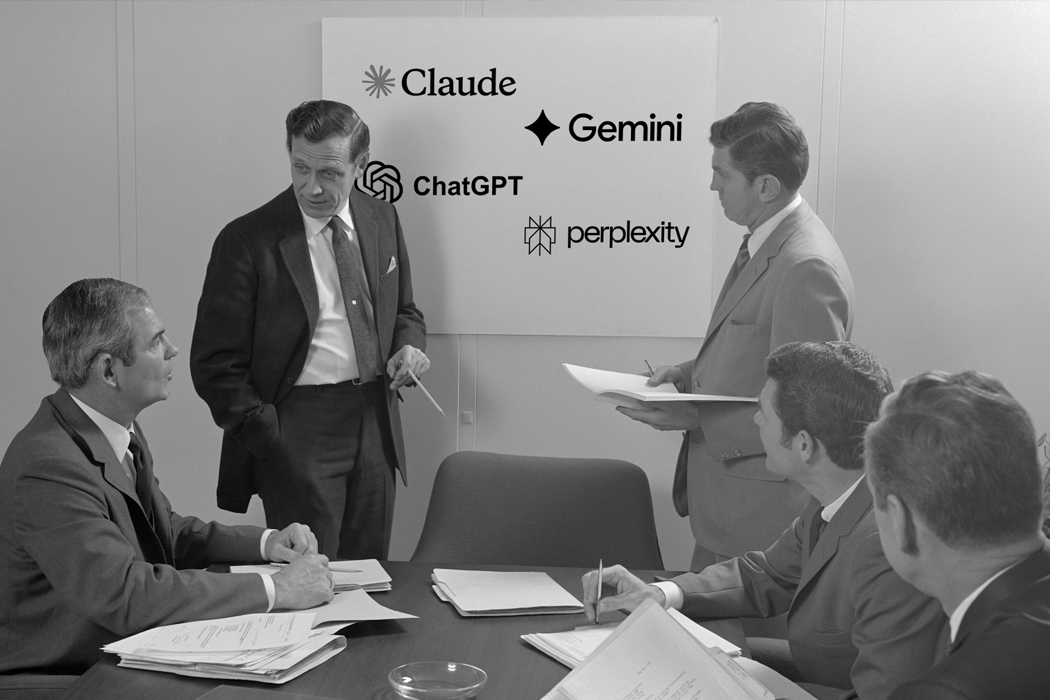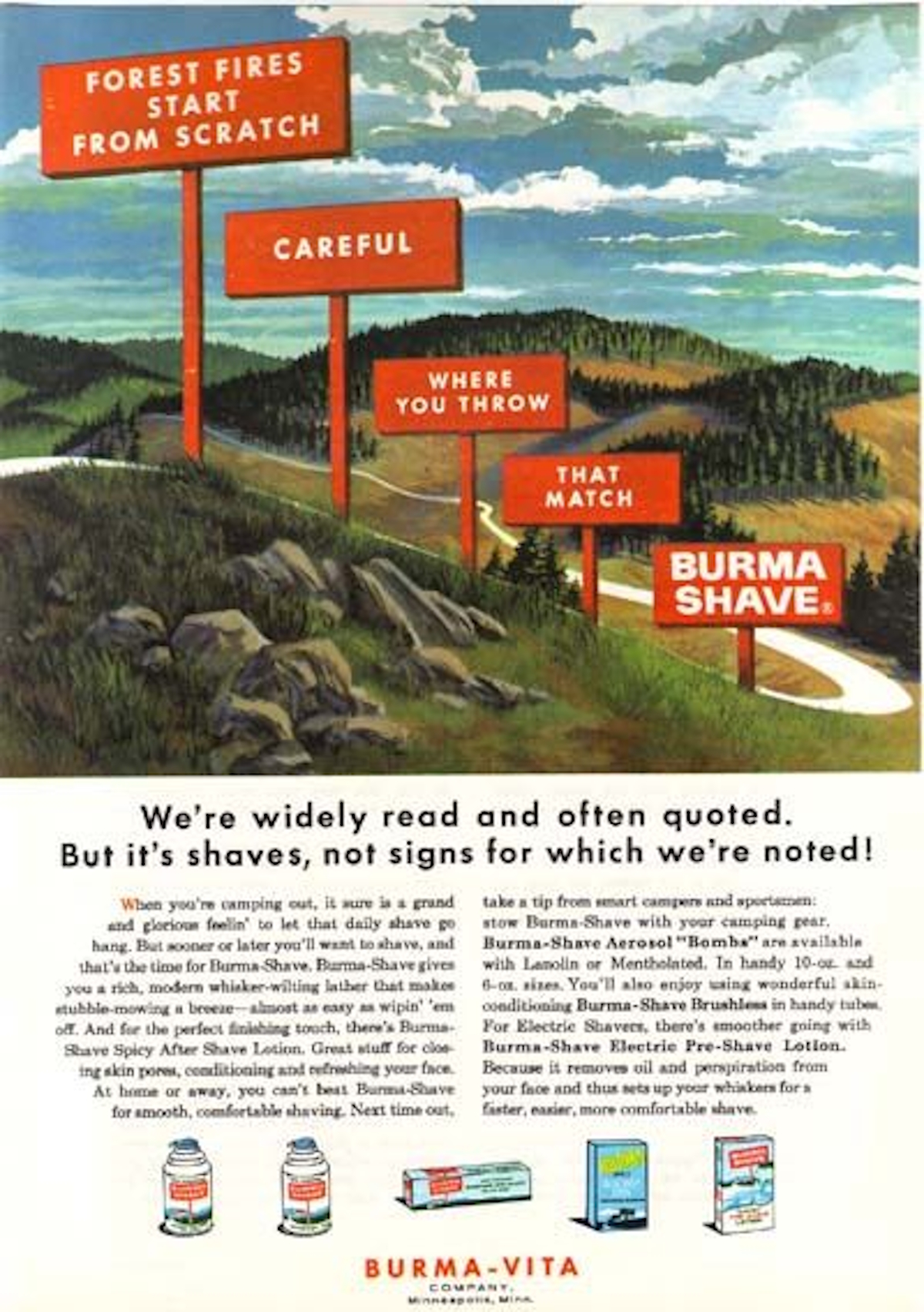

As a marketing geek, I love diving into 'old school' advertising approaches. There's something fascinating about understanding how brands were built before analytics dashboards, conversion pixels and the current panic over zero-click search.
I was rereading Ogilvy on Advertising recently and came across a line that stopped me cold.
David Ogilvy, the British ad exec widely known as "the Father of Advertising," founded Ogilvy & Mather and created iconic Mad Men-era campaigns for Rolls-Royce, Dove and American Express that still influence marketing today. His book Ogilvy on Advertising laid out timeless principles that still outperform many modern marketing strategies.
In his book, he wrote: "On the average, five times as many people read the headline as read the body copy."
Wait. Five times as many people see the headline but never read further? 80% of your audience gets the message but never engages deeper?
And that's exactly what's happening with zero-click search today, but even more extreme. Pew Research's July 2025 study found only 8% click when AI Overviews appear in results. That means over 12 times as many people see your brand mentioned but rarely click. Users see your brand in ChatGPT or Google's AI Overviews and never visit your site. No traffic. No attribution. Just the impression.
And Ogilvy's insight? That was by design. He deliberately crafted ads so the headline alone would build brand recognition, knowing most people would never read further.
He built legendary advertising campaigns without attribution, click-through rates, or conversion pixels. He measured success by brand recognition and sales, not clicks.
Bain & Company research found about 60% of searches end without clicks. Across all search types, users are getting their answers without visiting websites. When AI summaries appear specifically, that number jumps even higher.
Marketers are panicking about this shift, but building brands without clicks isn't new. It just forces us back to impression-based brand building, the same playbook Ogilvy used in 1963.
The same framework applies to AI search: Repetition, Assessment, Inevitability.
And here's what makes it work: with zero-click, impressions matter more than engagement. That's not a bug. That's the entire point.
Let's start with Ogilvy's most famous work.
The Rolls-Royce headline (1959): "At 60 miles an hour the loudest noise in this new Rolls-Royce comes from the electric clock."

Think about what happened with that ad. Most people never read the full advertisement. Most never visited a Rolls-Royce dealership. Most never called for a brochure.
But everyone knew what Rolls-Royce represented: quiet, refined engineering perfection and luxury without flash.
That was exactly the goal.
Ogilvy wrote, "Every advertisement is part of the long-term investment in the personality of the brand." He didn't need people to engage with the ad. He needed them to remember the brand.
AI search "mentions" work the same way today.
When ChatGPT, Claude, or Perplexity mentions your product in a comparison, the user reads the mention. They might click occasionally, but mainly they get the impression. Over time, through repeated exposure, your brand enters their consideration set.
This isn't just theory. The data shows how powerful these early impressions are.
This is how it works: brand recognition without attribution.
Ogilvy couldn't track ad impressions perfectly. But he knew something fundamental: Frequency creates familiarity. Repetition compounds recognition.
AI search reveals this pattern in new ways. You can now see where your brand appears in AI responses, how often you're mentioned, and which contexts you show up in. You still can't attribute sales to specific mentions, but you can track presence and competitive positioning. These visibility metrics matter more than Google SEO metrics because they track top-of-mind awareness, the same brand measurements Ogilvy relied on in the 1960s.

Here's a historical parallel that makes this concrete: Burma-Shave.
From 1926 to 1963, Burma-Shave put roadside signs along highways with sequential rhyming jingles. Drivers read them while driving past, but never stopped to visit a store or take any measurable action. Despite zero attribution, they built market dominance through repeated impressions. Drivers never "clicked through," they just remembered the brand when they needed shaving cream.
That's zero-click brand recognition: it worked in 1935 and it works in 2025.
But awareness alone isn't enough. The real power comes from how AI contextualizes that awareness for specific buyer needs.
Repetition is step one. Assessment is where the magic happens.
AI search accelerates this process because it does something traditional search never could: it contextualizes.
Why? Because AI already did the qualifying.
When someone clicks from AI search, they're not researching, they're validating. The decision was made during the AI interaction. The click, if it happens, is confirmation.
This isn't a new principle. Ogilvy understood this decades ago: "Be consistent in the image you present."
Think about Coca-Cola's 1960s TV advertising. Viewers never "engaged" with the ads. They couldn't click, couldn't interact, couldn't convert. But frequency created familiarity.
This wasn't unique to Coke. Ogilvy applied this principle across all his campaigns. Every Dove advertisement reinforced the same message: softness, mildness, one-quarter moisturizing cream. Repetition wasn't wasteful, it was strategic. Each impression contributed to what Ogilvy called a "complex symbol" in the consumer's mind.
That consistency creates assessment. As Ogilvy said, "If you keep playing the same tune, people will learn it." When people were thirsty, Coke was the obvious choice. No attribution, just inevitability.
That's zero-click consideration. You're on the list because you've been consistently present in the right contexts.
Once AI has consistently pre-qualified you in the right contexts, something powerful happens: you become the inevitable choice.
This is where impression-based marketing creates actual business results.
Users start with an internal list: "I think it's between Company X, Company Y, and Company Z."
That top-of-mind list represents 85-90% of eventual purchasers. Getting on the list IS the conversion, even though it happens months before anyone enters your funnel.
Here's what makes 2025 different: Pew Research found 62% of Gen Z and Millennials report seeing AI summaries, compared to just 23% of users 65+. AI summaries appear in search results regardless of user age, yet older users report far less frequent exposure. This means something profound: invisible AI consumption.
This matters because your brand impressions are being created passively, automatically, constantly. They're not "deciding to use AI search." They're just searching, and AI is answering.
If you're not mentioned consistently, you don't exist to them.
After enough AI mentions, you become the category default. Not because you're objectively "best," but because AI has mentioned you regularly in the right contexts.
This pattern holds across decades:
What this means for startups: The mechanism hasn't changed in 90 years. Only the medium is different.
In the 1960s, Ogilvy positioned American Express as "the card for professionals." That message appeared everywhere: in magazines, on billboards, in TV commercials. You couldn't click on any of it. You just saw it, repeatedly, in contexts that mattered.
Eventually it became reality. American Express was the professional's card because they said it was, persistently, for years.
As Ogilvy said: "If you always say you're the best, you'll become the best." Not through manipulation, but through consistent positioning that becomes self-fulfilling reality.
The result: brand perception shapes market reality through sustained repetition.
AI search is the same.
As Ogilvy wrote, "Brands are built by cumulative advertising."
That's brand recognition without attribution. It worked for Rolls-Royce, Dove and American Express. It works for AI search today.
So if attribution is broken and clicks don't matter, what should you actually measure?
With zero-click, attribution is broken and clicks matter less than visibility. The strategic questions are different now.
Are you showing up when prospects ask AI about your category? Are you mentioned alongside category leaders? Are you cited in the same contexts as competitors? Most brands have zero visibility into these questions.
Ogilvy built Rolls-Royce without attribution. You can build your SaaS brand without click-through rates. But you need to know if you're top-of-mind when prospects start evaluating solutions. That question is answered in AI responses, not Google Search Console.
In practice, this means tracking visibility and mentions in the AI platforms rather than traditional conversion metrics. Where does your brand appear? How often are you mentioned? Which competitors appear alongside you?
The fundamental shift is accepting that visibility metrics are what we can track in a zero-click world, even when attribution becomes impossible. This is the foundation of AI search visibility tracking: monitoring your brand presence across AI platforms the same way Ogilvy tracked awareness and market share.
As David Ogilvy said: "Don't count the people you reach, reach the people that count."
Ogilvy would get it immediately.
Understanding these new metrics is essential. But the real question remains: How do you build visibility in a zero-click world?
If you're ready to build AI search visibility like Ogilvy built brands, here's where to start. The industry calls this Generative Engine Optimization (GEO): optimizing your content for AI platforms the way traditional SEO optimized for search engines.
The hardest part is accepting that you won't see most of your AI influence in Google Analytics, but neither did Ogilvy, and he built some of the most valuable brands in history.




RankScience LLC
2443 Fillmore St #380-1937,
San Francisco, CA 94115
© 2025 RankScience, All Rights Reserved